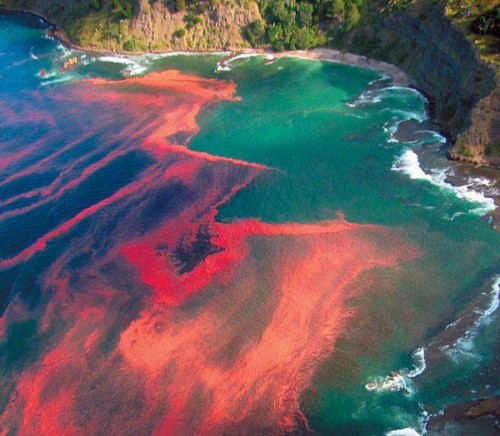FROM-The State
Global warming fix could threaten food chain
Researchers say plan could jeopardize oceans by introducing toxins into the food chain
By SAMMY FRETWELL
An experimental plan to fight global warming could cause blooms of poisonous algae in seafood-rich stretches of the open ocean, say researchers at the University of South Carolina.
For more than 20 years, scientists have discussed whether adding iron to the sea could effectively keep carbon dioxide out of the atmosphere by causing the increased growth of phytoplankton, a tiny ocean plant that absorbs the greenhouse gas from air.
But recent research shows that putting more iron in the ocean also could cause an explosion in growth of toxic algae.
A recent report by researchers from USC, the University of California-Santa Cruz and LSU says they have documented the toxic algae in sections of the open Pacific Ocean, a finding believed to be the first of its kind. Previously, the toxin had been known almost exclusively along the immediate coast, near beaches and harbors.
South Carolina professor Claudia Benitez-Nelson, a member of the research team, said adding iron to the sea might help curb global warming — but not without a potentially caustic side effect.
“This study has shown that when you add nutrients to the ocean, sometimes you have organisms grow that are really bad for you,’’ Benitez-Nelson said.
While many species harvested for seafood come from near shore waters, others can be found in the deep ocean. Anchovies, for instance, are harvested well out to sea off the coast of Mexico, Central America and California.
The concept of adding iron to the ocean dates to at least 1990. The idea is that since iron stimulates plant growth, ocean plants, which use carbon dioxide, could draw it into the sea, rather than let it rise into the atmosphere. Carbon dioxide in the atmosphere helps to trap heat, which causes earth’s temperatures to rise.
The research paper, published recently in the Proceedings of the National Academy of Sciences, is one of the first to look at algae blooms far offshore. Much of the field work was done hundreds of miles out at sea, and included areas off South America and Antarctica where iron has been introduced as an experiment.
“This is one of the first studies to convincingly prove one of the detrimental impacts of marine iron addition,” Benitez-Nelson said. “It shows that one solution you think may work, in the long term, it may even be worse than your original problem.’’
Carolina researcher Emily Sekula-Wood joined Benitez-Nelson on the team of scientists. The research was headed by Santa Cruz professor Mary Silver.
Benitez-Nelson said putting iron in the ocean raises ethical questions about “tinkering with mother nature.’’ Adding iron on a large scale could prove dangerous if the neurotoxins get into the food chain, the research team said.
The algae of concern is pseudo-nitschia, which produces a toxin called domoic acid. The toxin can make sea life sick.
In the past, the toxin has gotten into the food chain in coastal waters near shore, poisoning shellfish and other seafood. People eating seafood containing the toxin can get upset stomachs, suffer memory loss and become dizzy. In extreme cases, people have died from eating seafood that contains the toxin.
Generally, toxic algae are not only a threat to seafood, but to people who swim in areas infested with the plant material. Rashes and breathing problems can develop when people are exposed while swimming.

No comments:
Post a Comment